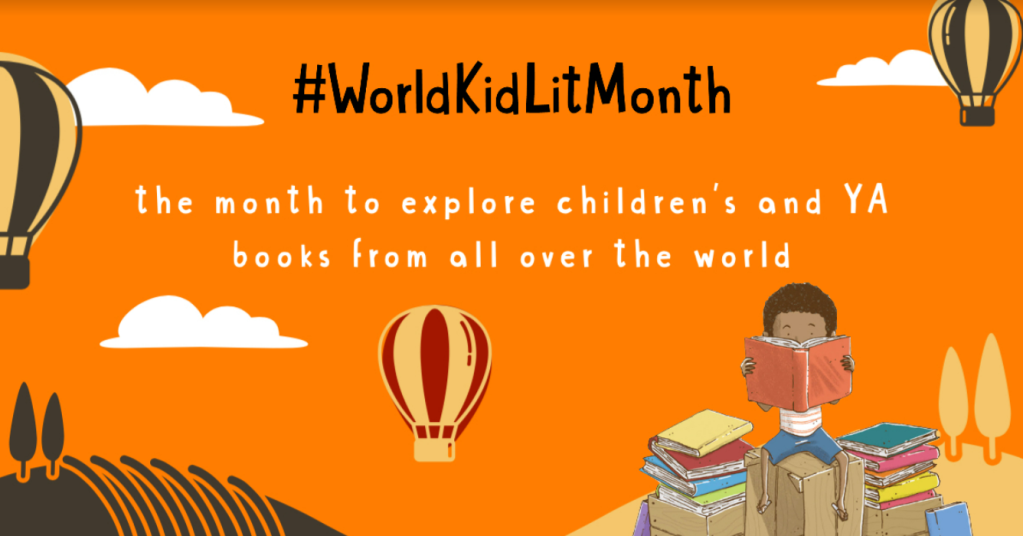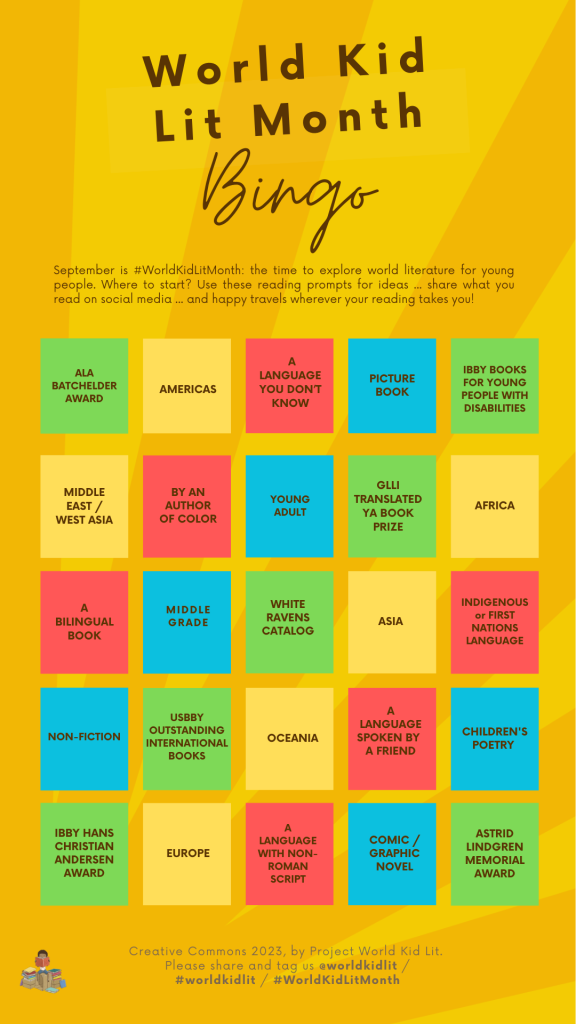
What is World Kid Lit Month?
Every September is World Kid Lit Month: the time to discover world literature and translation for children and young adults.
Explore this website for reading ideas. Perhaps you’ll find a book from another country, a book translated into English from another language, or a book set on the other side of the world from you?
Please share what you read with the hashtag #WorldKidLitMonth. We need your help in spreading the word!
How can we celebrate World Kid Lit Month?
Our blog is full of reviews of great books. You can search by country/continent, by source language, by literature prize, by age range, or by browsing our annual translation lists. We have downloadable PDF reading lists and book maps on our World Kid Lit Recommends page.

For reading prompts and new ideas of how to engage with world literature for young people, you can download this bingo chart as a PDF or PNG over on the World Kid Lit Month Resources page.
Why not write a book review? Pick a world kid lit book you love and share it. It could be a photo and a few words on social media, a short review for your school newsletter or your blog – or ours! It could be a new translation from another language (see our 2023 list), or an old favorite. Use the hashtag #WorldKidLitMonth!
If you’re already a seasoned explore of world literature for kids, you could set off on a year-long reading tour of the world. You could show the books you read on a physical globe, or colour in a map like this one from Cherry Creek Lane as recommended by Lori of Kids Read the World.
Are you studying another language? Or do you have a family connection to another country? Why not explore some children’s books in translation from there? Reading the same book in two languages (one at time or both together) is a great way to enrich your language skills while connecting with another culture.
We are eager to hear how bookstores, libraries, and schools are celebrating. Please reach out and let us know what you’re doing this year.
Do you have any images I can use on social media?

Yes! You’ll find free graphics in our public Google drive here. Please feel free to make your own graphics and posters for World Kid Lit Month, share them on social media, and let us know if you’re happy for us to share them in this drive.
Want to post about #WorldKidLitMonth on social media or include a blurb about it in your community newsletter? Feel free to download and use our suggested text (less than 100 words) and suggested tweets PDF.
Why is World Kid Lit Month in September?
In the USA, September is National Translation Month. 26 September is European Day of Languages, and 30 September is both International Translation Day and St Jerome’s Day – the patron saint of translators!
How did World Kid Lit Month start?
The hashtag #WorldKidLitMonth was first used on social media in 2016 by global literature experts Marcia Lynx Qualey (founding editor of ArabLit), Lawrence Schimel (bilingual poet, author, translator and publisher) and Alexandra Büchler (director of Literature Across Frontiers). With this hashtag, and World Kid Lit blog which also started in 2016, a campaign emerged for more visibility for world literature within English-language children’s and YA publishing.
We continue to be part of a broader social campaign for inclusive and representative literature for children – books that represent our global population in all its diversity.
Other Related Articles
- Other Organizations Championing World Literature for Young People
- 10 Ways to Celebrate World Kid Lit Month in your school
- 5 ways to Celebrate #WorldKidLit month this September
- How (and Why) We’re Celebrating ‘World Kid Lit Month’ in 2019 (Book Riot)
- 8 Ways to Celebrate World Kid Lit month in September
- Welcome to World Kid Lit Month! 5 Reasons to Celebrate
- 10 Ways to Celebrate World Kid Lit Month in your school